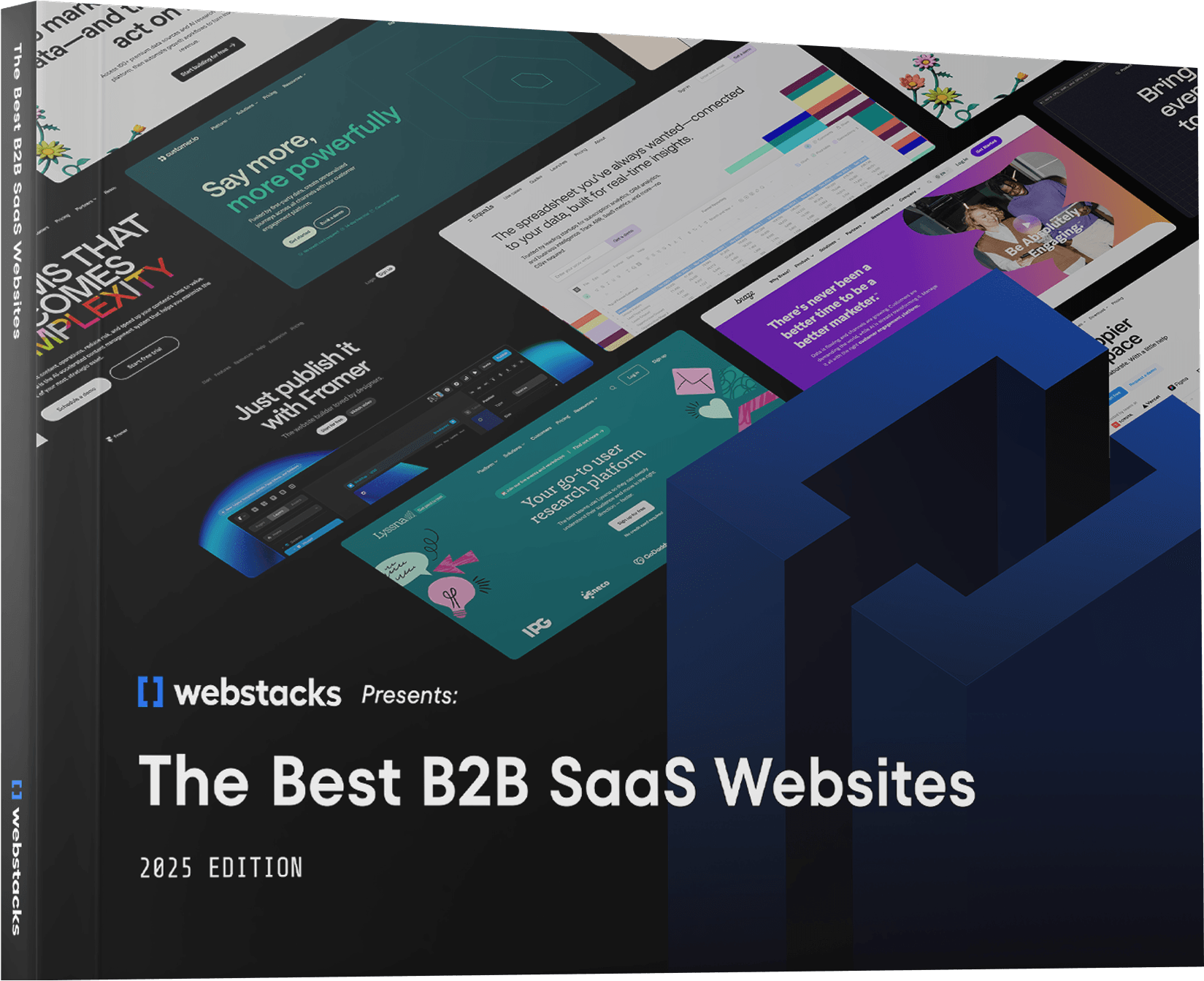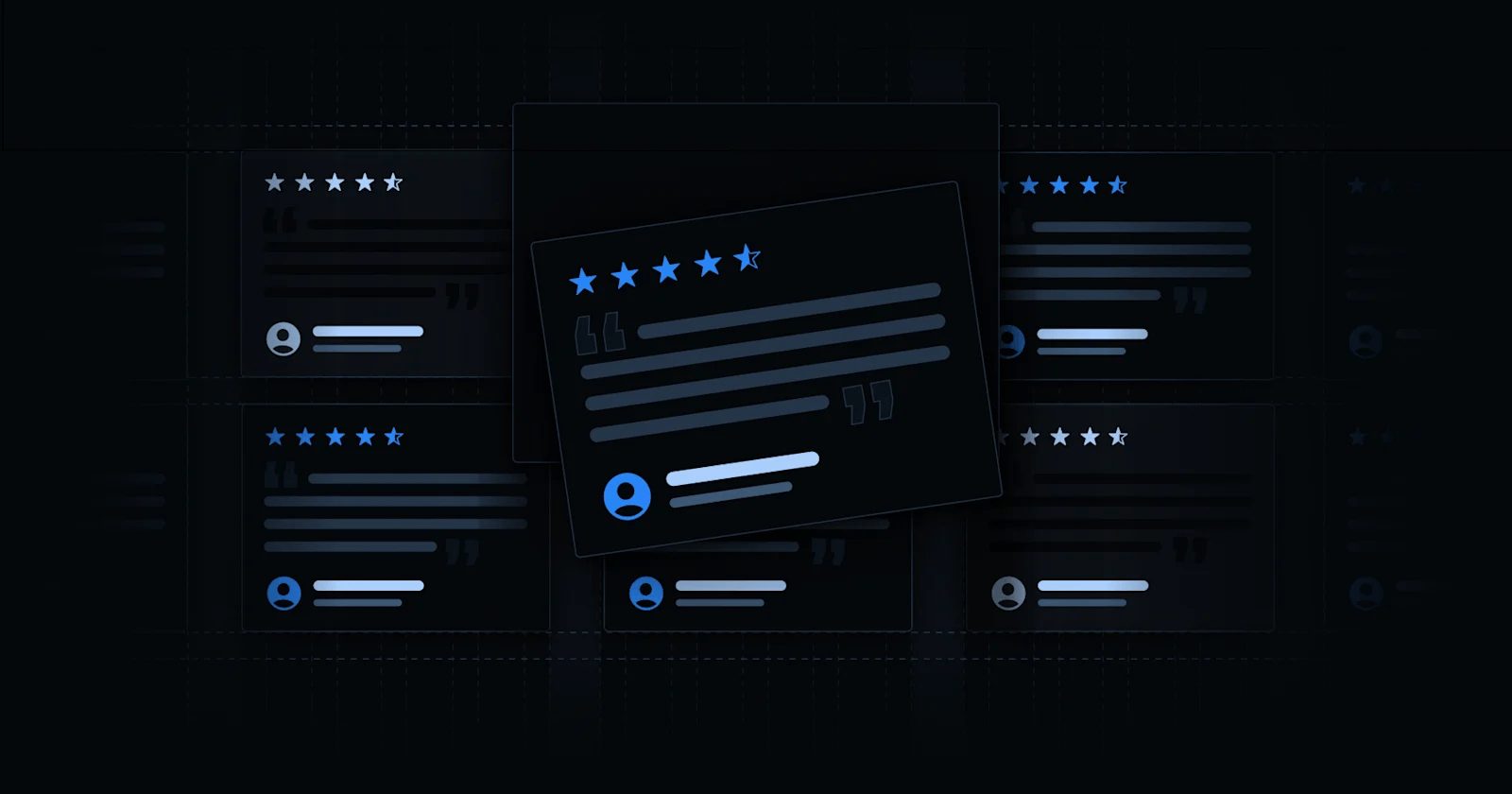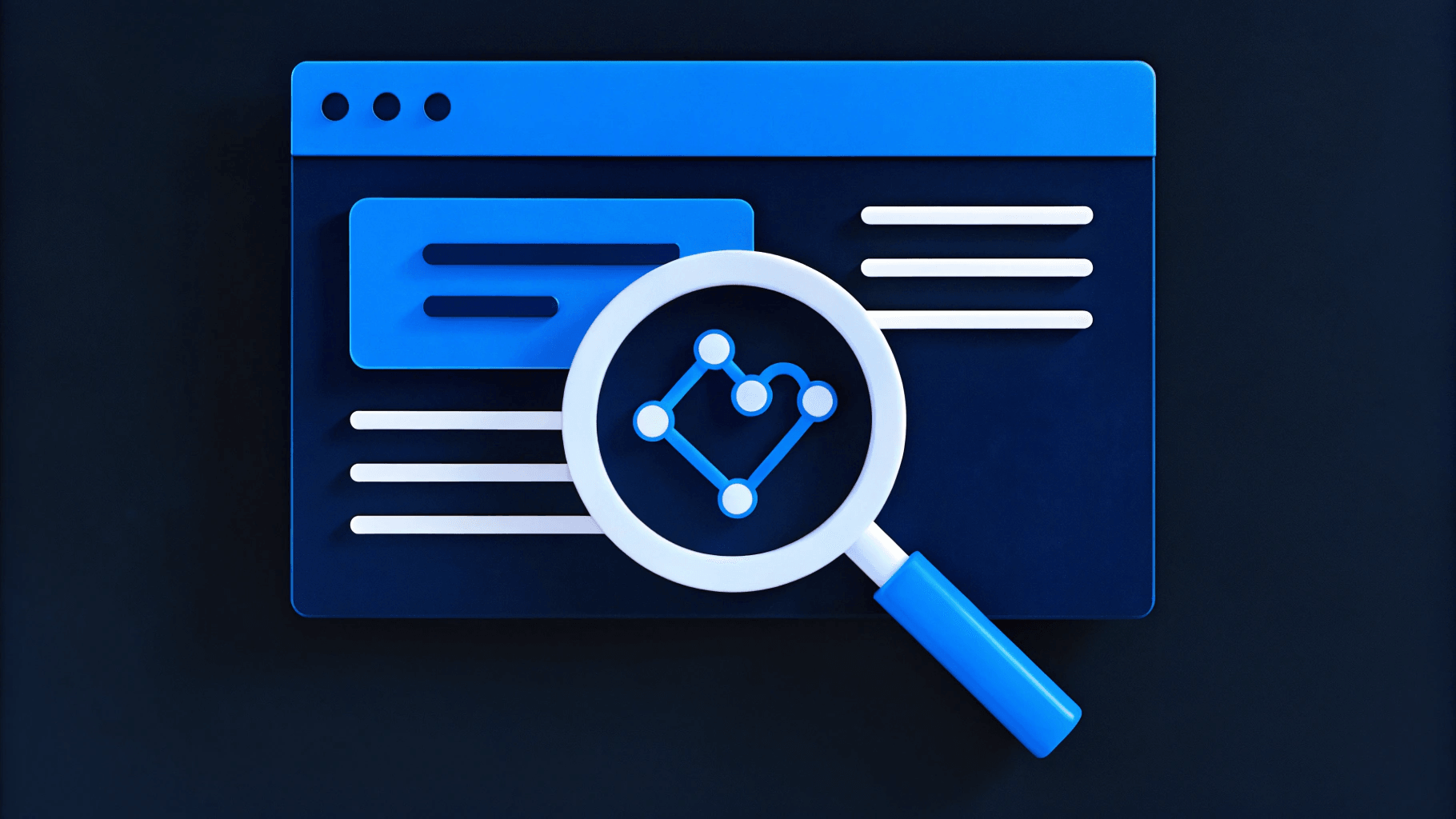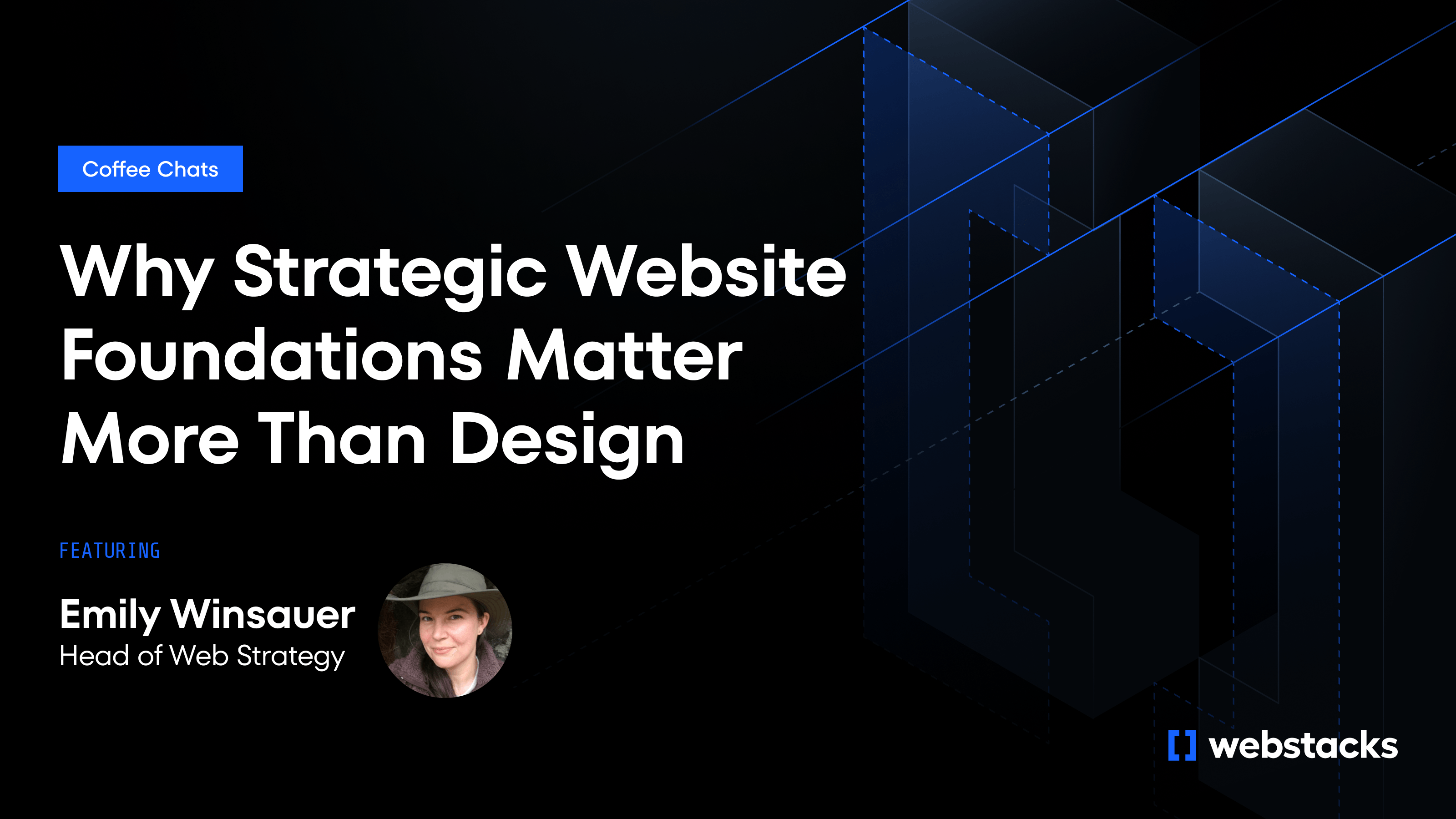A well-designed website can dramatically impact your lead generation and company's growth trajectory, while the wrong agency can lead to missed opportunities. For a deeper dive into the process, our comprehensive redesign guide provides detailed insights on how to approach a website overhaul. This guide walks you through a proven process for selecting the right web design agency, helping you assess expertise, compare capabilities, and make an informed decision aligned with your business objectives.
In brief:
- A methodical approach to selecting a web design agency ensures alignment with your B2B goals.
- Defining clear project requirements helps you find an agency that matches your needs.
- Evaluating portfolios and expertise reveals an agency's ability to handle complex B2B challenges.
- Comparing proposals critically can highlight long-term value beyond just initial costs.

Step 1: Define Your Project Requirements and Goals
Before you start reaching out to web design agencies, establish clear project parameters that will guide your selection process.
Start by creating two distinct lists: must-have features and nice-to-have features. Your must-have list should include functionality that directly supports your business objectives. For instance, if your project requires specific technologies or platforms, like Webflow development expertise, make sure to include that in your criteria.
Consider agencies that offer collaborative web design processes to help your team be involved throughout and the final product aligns closely with your brand and objectives. Consider your growth trajectory and how your website needs might evolve as your company expands. For example, if you're planning to scale internationally, you might need to factor in multi-language support from the start.
Your budget should align with your project's complexity and scope. According to industry data, website costs typically range from $1,000 to $10,000 for simple websites, $10,000 to $50,000 for moderately complex sites, and $50,000 to $100,000+ for complex, custom solutions. Add a 10-20% contingency buffer for unexpected needs or scope changes.
Establish realistic timeline expectations by considering:
- Your internal team's availability for project collaboration
- Critical business deadlines or launches that might affect the website
- Time needed for content creation and asset gathering
- Future maintenance and update requirements
For instance, if you have a major product launch in six months, ensure the website redevelopment aligns with this timeline to maximize impact.
Comprehensive planning will help you evaluate agencies more effectively and verify they can deliver within your constraints.
Step 2: Research and Create Your Agency Shortlist
Combine personal recommendations with systematic online investigation during your agency research.
The research phase should start by reaching out to your industry network—fellow executives, business partners, and industry peers who have recently completed similar projects. Their firsthand experiences can provide valuable insights that aren't readily available through online research.
For online research, focus on specialized B2B agency directories and review platforms. These resources offer detailed agency profiles, verified client reviews, and industry-specific rankings. Consider agencies renowned for their impactful design services, as this can significantly influence user engagement and lead generation. They allow you to filter agencies based on criteria like industry focus, project size, and technical expertise.
When evaluating potential agencies during this phase, pay attention to:
- Portfolio depth in your industry or similar B2B contexts
- Case studies demonstrating measurable results
- Technical capabilities matching your project requirements
- Client testimonials from companies similar to yours
- Industry awards or recognition
- Experience with your preferred technologies
Your goal should be to create a shortlist of 5-10 agencies that appear to align with your requirements. This number provides enough options for thorough evaluation while keeping the process manageable. Remember to document your findings for each agency, noting specific projects or capabilities that caught your attention—this will prove valuable during the more detailed evaluation phases ahead.

Step 3: Evaluate Portfolio and Expertise
When reviewing an agency's portfolio, look beyond surface-level aesthetics to evaluate how effectively they solve B2B-specific challenges. Start by examining their case studies for evidence of websites designed for complex B2B sales cycles and multiple decision-makers.
Pay particular attention to how they showcase complex products or services in their previous work. Look for examples where they've successfully simplified complicated offerings while maintaining the necessary depth of information that B2B buyers expect. Staying current with the latest SaaS design trends can also be a good indicator of an agency's ability to create modern and effective B2B websites. Moreover, assessing their adherence to accessibility best practices ensures your website is usable by all potential clients, which is increasingly important in today's digital landscape.
Technical expertise is key for B2B websites. Assess the agency's capability to handle:
- Integration with CRM systems and marketing automation platforms
- Implementation of sophisticated lead capture mechanisms
- Development of custom functionalities specific to B2B needs
- Mobile optimization while maintaining complex features
Website performance is crucial; for example, the ability to improve website speed can significantly affect user experience and SEO rankings. Additionally, understanding their approach to highly performant web development can make sure that your website not only looks good but also performs exceptionally.
Ask specific questions about their technical approach:
- How do they optimize websites for longer B2B sales cycles?
- What's their strategy for creating user experiences that cater to multiple stakeholders?
- How do they measure the success of their B2B websites?
- What's their approach to integrating with existing business systems?
- Do they have experience with cutting-edge technologies like AI-enhanced web experiences?
Look for evidence of data-driven decision-making in their past projects. Strong B2B agencies should be able to demonstrate how their design choices led to measurable improvements in lead generation, conversion rates, or other relevant business metrics. An agency experienced in implementing effective B2B blog strategies can also enhance your content marketing efforts and drive more traffic to your website.
For example, an agency might showcase a case study where their redesign increased a client's lead generation by 30% through improved user experience and call-to-action placements. Understanding the website personalization benefits can guide you in assessing how an agency can tailor user experiences to increase engagement.
Step 4: Review Communication and Project Management
Effective communication and structured project management are key indicators of an agency's ability to deliver successful projects. When evaluating potential partners, you'll want to assess both their communication style and project management approach.
Start by evaluating their communication practices. Look for agencies that demonstrate responsiveness to your initial inquiries and can explain technical concepts clearly without unnecessary jargon. A solid foundation in effective project planning is also crucial, ensuring that the project stays on track and meets your business objectives. A good agency should actively listen to understand your vision rather than simply pushing their own ideas. The presence of dedicated project managers or specific points of contact is also a positive sign.
On the project management front, ask about their preferred methodologies—whether they use Agile, Scrum, or other frameworks. Examine their project planning and tracking tools, and understand how they handle changes and revisions during the development process. An agency's approach to effective project planning can significantly impact the project's success. An effective agency should be able to clearly explain their process for managing timelines and milestones.
For instance, an agency that provides access to a project management dashboard allows you to track progress in real-time and fosters transparency throughout the project.
Red flags to watch for include delayed responses to initial communications, vague explanations about their project management approach, or the absence of clear processes for handling changes. Positive indicators include transparency in their project tracking methods, well-defined communication channels, and a structured approach to timeline management.
Step 5: Compare Proposals and Pricing
When evaluating web design agency proposals, you need to look beyond the bottom-line price to understand the true value and scope of services being offered. Start by requesting detailed proposals from your shortlisted agencies that clearly outline their pricing structures—whether they use fixed-price contracts or hourly rates.
Review each proposal for these critical elements:
- Detailed project scope and specific deliverables
- Payment schedules and project milestones
- Technical specifications and included features
- Ownership rights for source code and intellectual property
- Warranty terms and ongoing support commitments
Look for transparency in how agencies break down their costs. A comprehensive proposal should clearly indicate what's included in the base price and what might incur additional charges. Pay special attention to how they handle revisions, feature additions, and post-launch support. For example, an agency might include a certain number of revisions within the initial cost and clearly outline fees for additional changes to prevent unexpected expenses.
When comparing prices, consider the long-term value rather than just the initial investment. An agency offering a higher price point might provide better value through:
- More comprehensive project management
- Higher quality deliverables
- Included maintenance periods
- Stronger warranties
- Better post-launch support
Remember that vague or overly simplistic proposals often lead to scope creep and unexpected costs later. To make it happen so that you're getting the best value, it's helpful to understand how to approach a budget-friendly redesign without compromising on quality. Choose an agency that demonstrates thoroughness and transparency in their pricing structure and contract terms.
Step 6: Make Your Final Decision
After thoroughly evaluating potential agencies, it's time to make your final selection. Focus on choosing an agency that meets your technical requirements and aligns with your company's vision and working style.
Consider these key factors in your final assessment:
- Technical expertise and proven experience in your industry
- Cultural fit and communication style alignment with your team
- Quality of portfolio work, especially projects similar to yours
- Value offered relative to your investment
- Strategic understanding of your business objectives
Remember, while data and evaluations are important, trust your instincts about the working relationship. The right agency should feel like a natural extension of your team, demonstrating both the expertise to execute your vision and the collaborative spirit to make the journey successful. For more insights, consult our successful website redesign guide.
Once you've selected your agency, take these immediate steps:
- Negotiate and clarify the final contract terms, including deliverables and milestones
- Establish a detailed project timeline with clear phases
- Set up dedicated communication channels and define points of contact
- Document all project requirements and expectations
- Define success metrics for the project
Our Take on Choosing the Right Web Design Agency
At Webstacks, we believe that selecting the right web design agency is pivotal for B2B companies aiming to elevate their digital presence. The process isn't just about finding a vendor, but about partnering with a team that understands your industry nuances and can translate complex B2B requirements into an engaging online experience. By focusing on clear communication, technical expertise, and strategic alignment, businesses can transform their websites into effective tools that drive growth and foster long-term client relationships. Our experience has shown that a collaborative approach yields the most impactful results, aligning web design with overarching business goals.

Conclusion
Selecting the right web design agency is a critical decision that will impact your digital presence for years to come. Thoroughly evaluating potential partners based on their expertise, technological capabilities, and alignment with your business objectives can lead you to an agency that will help transform your website into a powerful business asset. Use this guide as your roadmap to make an informed decision, remembering that the right partnership goes beyond just technical skills—it's about finding a team that understands your vision and can execute it effectively in the digital landscape.
Ready to optimize your SaaS website structure for growth? See the Webstacks difference: Schedule a brief discovery call today. Let us help you create a website that drives results.




